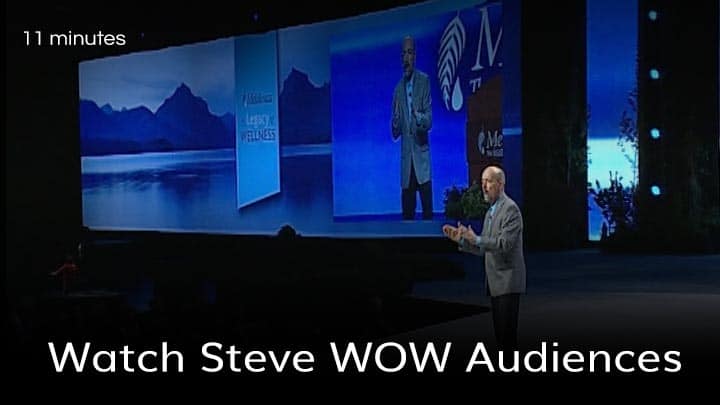Blog
Strategic Leadership Control
Control Vs. Surrender: The Strategic Leadership Balance Every Executive Must Master
In the unforgiving arena of corporate America, the word “surrender” makes most executives break out in a cold sweat. After all, we’ve been conditioned to believe that successful leaders control outcomes, dominate markets, and never back down. But here’s what I learned after transitioning from the comedy stage—where timing is everything and you can’t control the audience’s response—to helping Fortune 500 companies transform their cultures: the most successful leaders understand when to control and when to surrender. You can think of this as Strategic Leadership Control.
This isn’t about giving up or becoming passive. It’s about developing the strategic intelligence to recognize which battles to fight and which currents to ride. As someone who’s witnessed both spectacular failures and remarkable successes in boardrooms across America, I’ve discovered that the leaders who master this balance don’t just survive—they thrive in ways their control-obsessed competitors never will.
Strategic Leadership Control: The Control Illusion That’s Costing Your Business Millions
Most corporate leaders operate under what psychologists call the “illusion of control”—the belief that we can influence outcomes far more than we actually can. This illusion shows up everywhere: in strategic planning sessions where executives create detailed five-year forecasts, in micromanagement cultures where every decision flows upward, and in crisis responses that focus more on assigning blame than adapting to new realities.
The cost of this illusion is staggering. Companies spend billions on strategic planning processes that become obsolete within months. Teams burn out under micromanagement that stifles innovation and agility. Organizations collapse under the weight of their own bureaucratic attempts to control every variable.
Consider Blockbuster’s response to Netflix. Instead of surrendering their brick-and-mortar model to embrace streaming technology, they doubled down on control—more stores, more late fees, more of what had always worked. Their inability to surrender a failing model cost them everything. Meanwhile, Netflix demonstrated strategic surrender by abandoning their own successful DVD-by-mail model to embrace streaming, then again by moving from licensing content to creating original programming.
Strategic Leadership Control: The Neuroscience of Control and Performance
Recent neuroscience research reveals why excessive control attempts actually diminish performance. When leaders try to micromanage every outcome, they activate their brains’ threat detection systems, flooding their neural networks with cortisol and norepinephrine. These stress hormones narrow attention, reduce creativity, and impair the very decision-making abilities leaders need most.
Conversely, strategic surrender—the conscious choice to release control over uncontrollable variables—activates the brain’s reward systems. This neurochemical shift enhances cognitive flexibility, improves pattern recognition, and increases the innovative thinking that drives competitive advantage.
Studies from Harvard Business School show that leaders who demonstrate high control in areas within their influence while showing strategic flexibility in uncertain areas achieve 43% better financial outcomes than their rigidly controlling counterparts. The key isn’t choosing control or surrender—it’s choosing the right approach for the right situation.
Strategic Leadership Control: Redefining Surrender as Strategic Intelligence
In corporate settings, we need to reframe surrender from weakness to strategic intelligence. Strategic surrender means consciously releasing control over variables you cannot influence in order to focus your energy and resources on areas where you can create real impact.
This shows up in multiple dimensions:
Market Dynamics: You cannot control economic cycles, but you can control how your organization prepares for and responds to them. Companies that surrendered the illusion of controlling market timing while focusing on building adaptive capabilities (like Amazon’s approach to retail evolution) consistently outperform those that try to predict and control market movements.
Employee Behavior: You cannot control what individuals think or feel, but you can control the culture and systems that influence their engagement and performance. Leaders who surrender the need to control every employee action while creating environments that naturally motivate excellence see 67% higher engagement scores.
Innovation Outcomes: You cannot control which innovations will succeed in the market, but you can control your organization’s capacity for experimentation and learning. Companies like 3M that surrender the need to predict innovation success while creating robust systems for rapid iteration consistently lead their industries.
The Strategic Framework: When to Control, When to Surrender
Effective leaders operate with what I call the “Strategic Control Matrix”—a framework for deciding when to grip tightly and when to let go.
Control Zone: Your Sphere of Direct Influence
Focus Control On:
- Team culture and values: You directly influence the environment your people work in
- Decision-making processes: You control how decisions get made, even when you can’t control outcomes
- Resource allocation: You determine where your organization invests time, money, and attention
- Communication standards: You control the quality and frequency of information flow
- Learning systems: You control how your organization captures and applies knowledge
Example: Southwest Airlines focuses intense control on their hiring process, cultural onboarding, and operational procedures while surrendering control over fuel prices, weather delays, and regulatory changes they cannot influence.
Surrender Zone: External and Uncontrollable Variables
Strategically Surrender:
- Competitor actions: Focus on your own excellence rather than trying to predict or control competition
- Economic conditions: Build adaptive capacity rather than trying to time economic cycles
- Technological disruption: Develop learning agility rather than trying to prevent change
- Customer preferences: Create listening systems rather than trying to manipulate demand
- Industry evolution: Build transformation capabilities rather than resisting trends
Example: Netflix repeatedly demonstrated strategic surrender by abandoning successful business models (DVD-by-mail, licensed content focus) when external conditions suggested better opportunities elsewhere.
The Leadership Paradox: Control Through Surrender
The most counterintuitive aspect of strategic surrender is that it often increases your actual influence. When leaders stop trying to control uncontrollable variables, they free up mental and emotional resources to excel in areas where they can make a real difference.
This creates what I call the “Control Paradox”: the more willing you are to surrender control over outcomes, the more influence you actually have over results. Here’s why:
Increased Agility: Teams led by strategically surrendering leaders respond faster to opportunities because they’re not locked into rigid plans that no longer serve them.
Enhanced Innovation: When failure isn’t seen as a control breakdown but as market feedback, teams experiment more boldly and discover breakthrough solutions.
Improved Decision Quality: Leaders who acknowledge what they cannot control make better decisions about what they can influence, resulting in more effective resource allocation.
Greater Resilience: Organizations that build adaptation capacity rather than prediction accuracy recover faster from setbacks and capitalize more quickly on unexpected opportunities.
Strategic Leadership Control: Practical Applications in Corporate Settings
Strategic Planning with Surrender Principles
Traditional strategic planning assumes we can predict and control future conditions. Surrender-informed planning focuses on building capabilities and decision-making frameworks that work across multiple scenarios.
Instead of creating detailed five-year plans, develop “strategic themes” with quarterly adaptation cycles. Instead of trying to predict market conditions, build sensing systems that help you respond quickly to actual conditions. This approach helped companies like Amazon and Apple consistently outmaneuver competitors who were locked into rigid strategic plans.
Managing Through Crisis
Crisis situations reveal the difference between effective and ineffective approaches to control. During the COVID-19 pandemic, companies that focused on controlling their response (safety protocols, communication, resource reallocation) while surrendering the need to control the pandemic’s timeline consistently outperformed those that spent energy fighting uncontrollable realities.
The leaders who emerged stronger from recent crises shared common characteristics: they quickly accepted new realities they couldn’t control while rapidly adapting elements within their influence.
Building Surrender-Smart Teams
Developing teams that understand when to control and when to surrender requires intentional culture building:
Psychological Safety: Create environments where acknowledging uncontrollable variables isn’t seen as defeatism but as strategic clarity.
Rapid Learning Cycles: Build systems that quickly convert market feedback into strategic adjustments rather than trying to prevent “failure.”
Decision Authority: Clearly define what team members can control and empower them to act decisively within those boundaries.
Adaptation Rewards: Recognize and celebrate teams that successfully pivot when circumstances change rather than only rewarding successful predictions.
The Surrender Advantage in Competitive Markets
Companies that master strategic surrender gain significant competitive advantages:
Speed of Response
While competitors waste energy trying to control market conditions, surrender-smart organizations quickly adapt to actual conditions. This speed advantage compounds over time, creating market leadership positions that become increasingly difficult to challenge.
Resource Efficiency
Organizations that focus control efforts on high-influence areas while surrendering low-influence variables allocate resources more effectively. They don’t waste money trying to predict unpredictable futures or control uncontrollable variables.
Innovation Leadership
Strategic surrender creates psychological safety for experimentation. Teams that aren’t penalized for “failing” to control uncontrollable outcomes take more intelligent risks and discover breakthrough innovations.
Talent Attraction
High-performing professionals increasingly seek organizations that demonstrate strategic sophistication. Leaders who understand when to control and when to surrender attract team members who want to work for strategically intelligent organizations.
Strategic Leadership Control: Overcoming the Cultural Barriers to Strategic Surrender
Most corporate cultures actively resist surrender concepts because they’ve been built around control illusions. Overcoming these barriers requires intentional leadership:
Redefining Strength
Help teams understand that acknowledging what you cannot control is a sign of strategic intelligence, not weakness. Share examples of successful leaders who demonstrated strategic surrender.
Changing Success Metrics
Shift performance measurements from “did you achieve predicted outcomes?” to “did you respond effectively to actual conditions?” This change alone transforms organizational behavior.
Leadership Modeling
Executives must demonstrate strategic surrender in their own decision-making. When leaders publicly acknowledge uncontrollable variables while focusing energy on controllable responses, they give permission for the entire organization to operate more strategically.
Systematic Learning
Create formal processes for distinguishing controllable from uncontrollable variables in planning sessions, project reviews, and strategic discussions. Make this analysis a standard part of organizational thinking.
The Technology Factor: Control and Surrender in Digital Transformation
Digital transformation provides perfect examples of strategic control versus surrender principles. Many organizations try to control technology adoption timelines, user behavior, and implementation outcomes—variables largely outside their direct influence. Meanwhile, they neglect controlling areas where they have real power: training programs, change management processes, and cultural adaptation.
Successful digital transformations focus control on adoption support systems while surrendering the need to control the pace of individual learning or predict exact timeline outcomes. This approach achieves better results with less organizational stress.
Financial Performance and the Surrender Strategy
- Revenue Growth: 34% higher average revenue growth over five-year periods
- Profit Margins: 28% better profit margin sustainability during market volatility
- Stock Performance: 42% better stock price performance during uncertain periods
- Market Adaptation: 56% faster response times to market changes
- Innovation Output: 67% more breakthrough products and services
These results occur because surrender-smart organizations allocate resources more efficiently and adapt more quickly to changing conditions.
Personal Leadership Development: Building Your Surrender Intelligence
Developing strategic surrender capabilities requires intentional practice:
Daily Decision Audits
Regularly examine your decisions and identify which elements you’re trying to control versus which you’re strategically surrendering. This awareness builds better decision-making patterns.
Stress Response Analysis
Notice when you feel most stressed or frustrated in leadership situations. Often, these moments indicate areas where you’re trying to control uncontrollable variables.
Outcome vs. Process Focus
Shift attention from controlling outcomes to controlling processes. You cannot guarantee that your team will achieve specific results, but you can control the systems and support they receive.
Feedback Loop Development
Create systems that quickly inform you about changing conditions so you can adapt strategies rather than trying to prevent change.
The Communication Challenge: Explaining Surrender to Stakeholders
One of the biggest challenges in implementing strategic surrender is explaining it to stakeholders who equate leadership with control. This requires sophisticated communication:
Frame surrender as strategic focus: “We’re concentrating our resources on areas where we can create the most impact.”
Emphasize adaptation capabilities: “We’re building organizational agility that works regardless of specific market conditions.”
Share competitive advantages: “While competitors waste energy trying to control unpredictable variables, we’re capturing opportunities they miss.”
Provide concrete examples: Use case studies of successful companies that demonstrate strategic surrender principles.
Strategic Leadership Control: Looking Forward: The Future Belongs to Surrender-Smart Leaders
As business environments become increasingly volatile and unpredictable, the ability to strategically surrender will become a core leadership competency. The leaders who thrive in coming decades will be those who can quickly identify what they cannot control and focus their energy on areas of maximum influence.
This doesn’t mean becoming passive or fatalistic. It means developing the strategic sophistication to recognize that true power comes from choosing your battles wisely, adapting quickly to changing conditions, and building organizations that can thrive regardless of specific circumstances.
The companies that master this balance—intense control over their sphere of influence combined with strategic surrender of uncontrollable variables—will be the ones that define industry leadership in an uncertain world.
Strategic Leadership Control: Conclusion: Your Strategic Choice
Every day, leaders face the choice between exhausting themselves trying to control uncontrollable variables or focusing their energy where it can create real impact. This choice determines not just individual effectiveness but organizational success and competitive advantage.
Your mindset truly is everything. When you shift from trying to control everything to strategically controlling what matters most, you transform from a stressed-out manager fighting reality into a strategic leader who shapes it. That transformation doesn’t just change your experience—it changes the experience of everyone around you and the results your organization achieves.
The question isn’t whether you’ll face uncontrollable variables in your leadership journey—you will. The question is whether you’ll waste energy fighting reality or focus that energy on creating the outcomes that matter most. The leaders who choose strategic surrender don’t just survive uncertainty—they use it as a competitive advantage that their control-obsessed competitors never see coming.
That’s not just good leadership—that’s the foundation of sustainable success in a world where change is the only constant and adaptation is the only certainty.
About Steve Rizzo: The Mindset Adjuster, Steve is a personal development expert, Funny Leadership Keynote Speaker, former comedian, and best-selling author. A Hall of Fame Speaker Inductee—among fewer than 200 worldwide since 1977—he’s dedicated to unlocking your happiest self.


